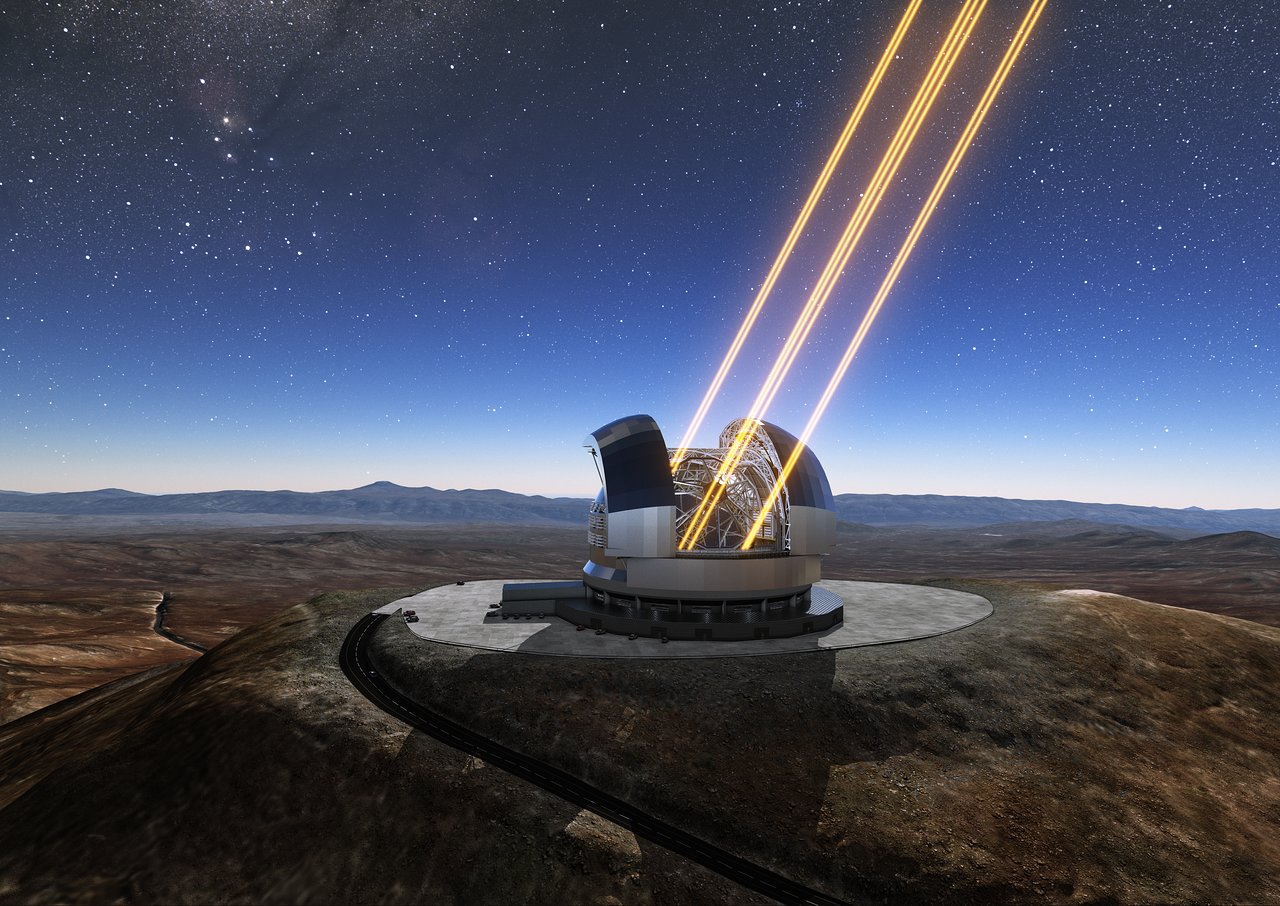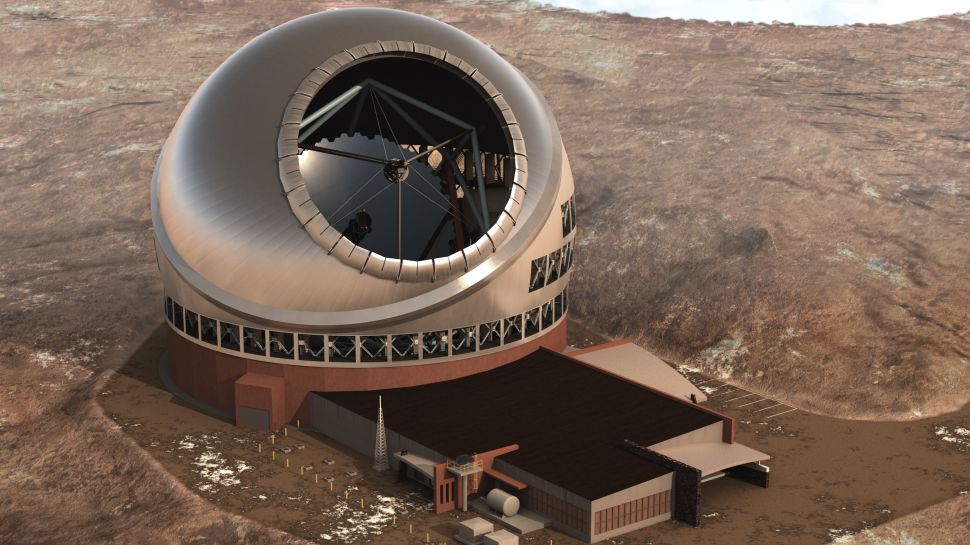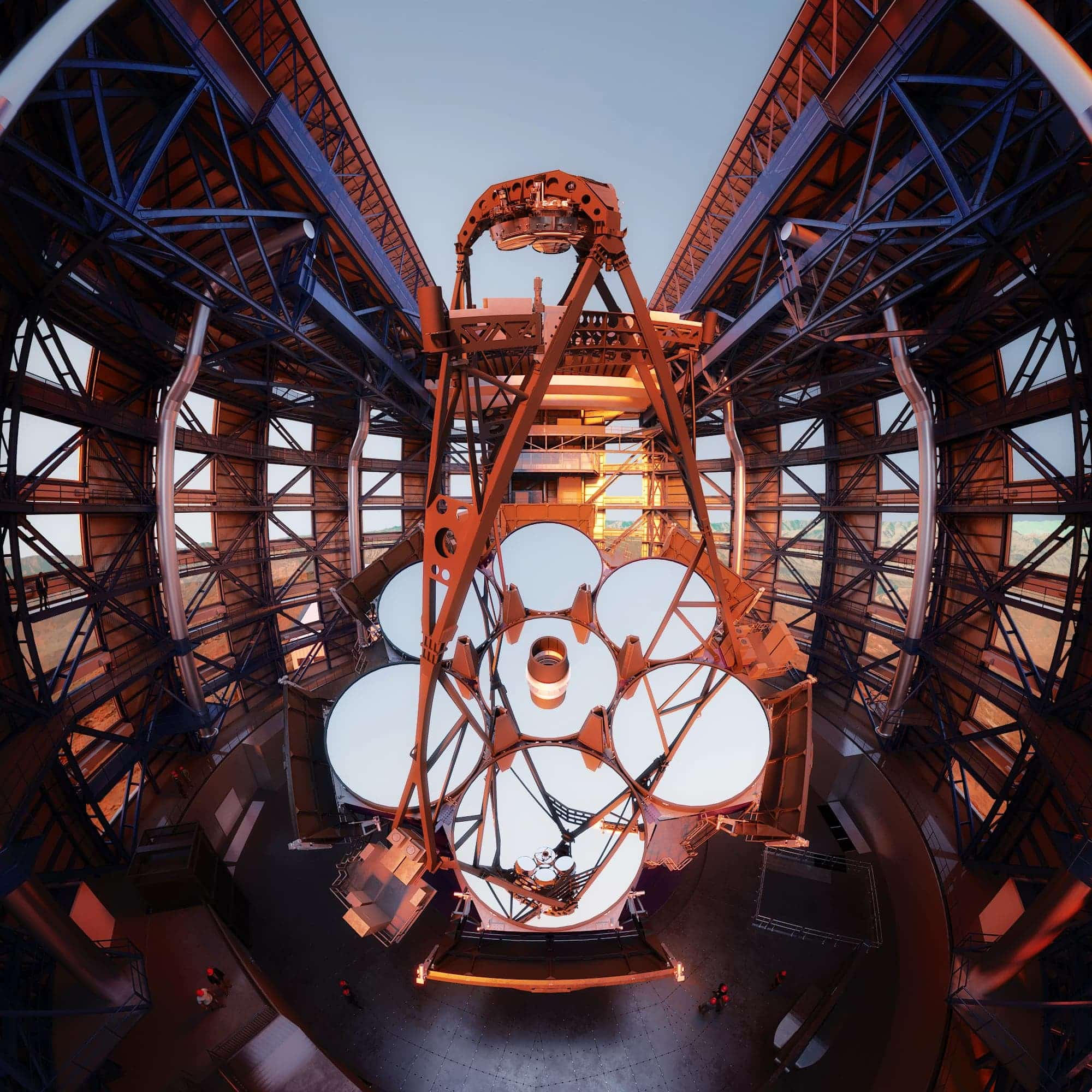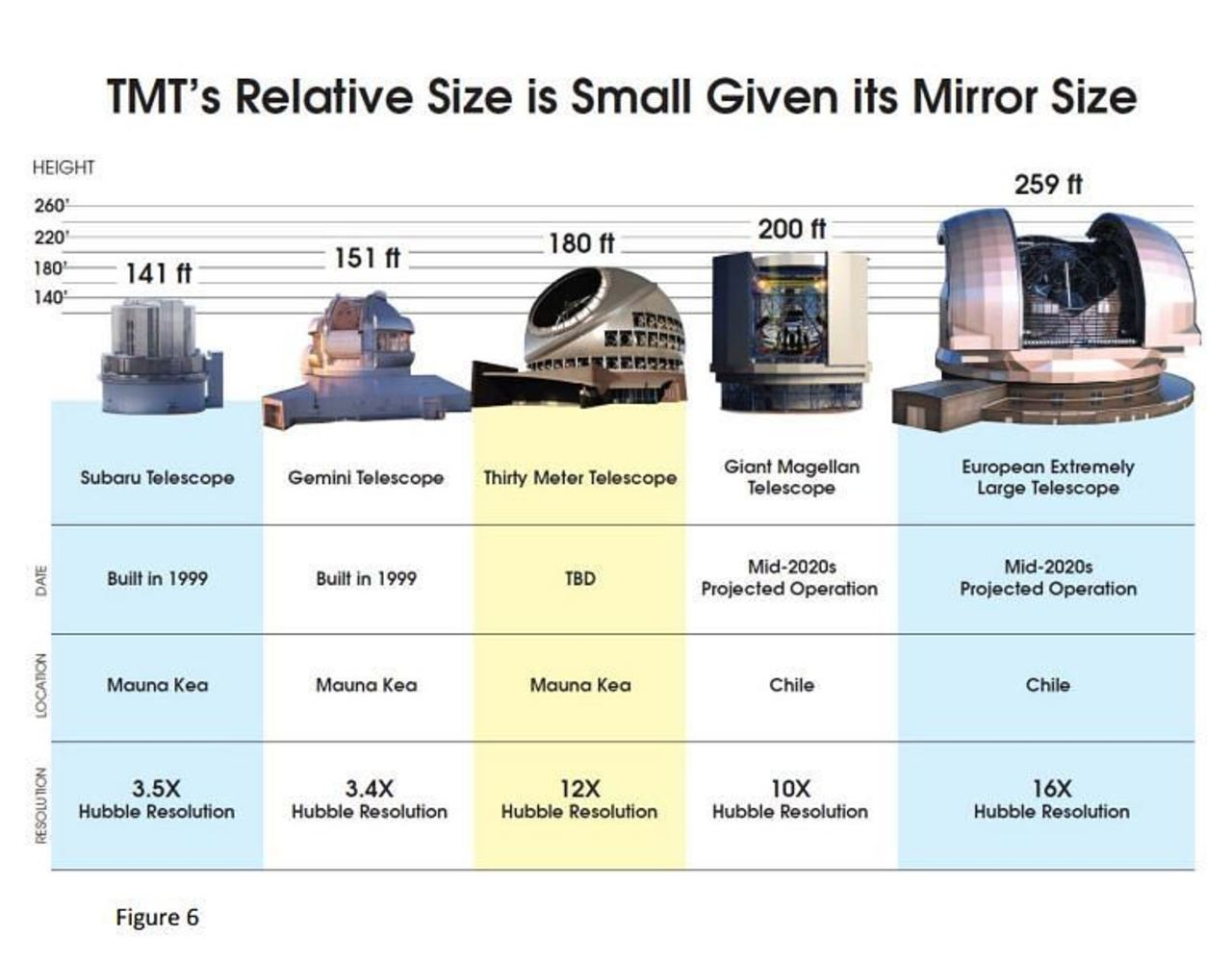Why astronomers are worried about 2 major telescopes right now
Scientists may only get to have either the Giant Magellan Telescope or the Thirty Meter Telescope. The problem? Both are already in the works.

There's a bit of tension right now in the U.S. astronomy community and, perhaps unsurprisingly, it has to do with telescopes — extremely large telescopes, in fact. Here's what's going on.
The National Science Foundation (NSF), a source of public funding that two powerful next-gen observatories have been banking on for financial support, is facing pressure to go forward with only one telescope. This is because last month, the National Science Board — which is basically an advisory committee for the NSF — recommended that it cap its giant telescope budget at $1.6 billion. This is a lot of money, but it's just not enough for both. The board even says the NSF will have until only May of this year to decide which telescope gets the go-ahead.
Yet, both telescopes are already in the middle of construction, both are equally important and both are actually supposed to work together to fulfill a wide-eyed dream for astronomers. Because of how utterly huge they're meant to be, they're expected to one-up even the $10 billion James Webb Space Telescope (JWST) in many ways. That's the gold-mirrored, silvery-shielded trailblazer sitting a million miles from Earth right now, finding deep space gems so quickly it's normalizing us to seeing things humanity once couldn't fathom seeing. Imagine something better.
Related: Scientists bury time capsule to celebrate upcoming Extremely Large Telescope
"To my knowledge, neither telescope today has a path forward without the investment by NSF," John O'Meara, chief scientist at the Keck Observatory, told Space.com. "I've said in other interviews that 'great vision should drive great budget, not vice versa,' and I believe it here."
One of the big scopes is the Giant Magellan Telescope (GMT). It's taking shape as you read this in the clear-skied deserts of Chile, and it's projected to cost something like $2.54 billion as a whole. The other is called The Thirty Meter Telescope (TMT). That one's location is a bit more controversial. It's planned to decorate a mountain in Hawaii called Mauna Kea, but locals have protested the decision because this stunning volcanic peak that boasts low humidity and gentle winds (perfect conditions for astronomy) is extremely meaningful in native Hawaiian culture. It's a fraught situation, as 13 other telescopes already live in the area and some local people say the facilities are impacting the natural environment. In terms of cost, however, the projected amount is just about symmetrical to the GMT's.
"They're expensive," Eric Isaacs, the president of the Carnegie Institution for Science, which has provided a sizable amount of private funding for the GMT, told Space.com "Not so much that the NSF couldn't do it — but they'd have to move things around and decide that's a priority."
Breaking space news, the latest updates on rocket launches, skywatching events and more!
As of now, both telescope crews seem to remain hopeful while waiting for a decision.
"Our international consortium is fully committed to successfully completing the $2.54 billion Giant Magellan Telescope," the GMT team told Space.com.
"We read with great interest the NSB's recommendation to the NSF and are eager to work with the NSF to advance US leadership in astronomy for the next generation of astronomers," a spokesperson for the TMT told Space.com.
Isaacs acknowledges there's some natural competition due to the $1.6 billion announcement, but all in all, emphasizes that the teams have a united front. "We're sticking together," he said. "We were hoping NSF would come up with anything at this point, and they're really waking up to this."
Telescope friends
There's a key reason these telescopes are meant to be companions. Each can find the other's missing pieces; together, they can paint a picture of the universe in its grand totality.
The GMT is going to be on call for the Southern Hemisphere, while the TMT will have the Northern Hemisphere. Both also have complementary expertises. Some things the TMT can do, the GMT won't be as trained on. But the GMT can pick up where the TMT leaves off in other regards. Tag-team vibes. In this way, while holding hands and walking through the cosmos, the telescopes are supposed to be able to execute science our current robotic eyes on the sky simply can't compete with. How could a ground-based telescope view things the spaceborne JWST can't, you wonder? The quick answer is that a telescope on our planet can be bigger than one in space. For now, at least.
The TMT, which just finished polishing the 100th of its 492 total mirror segments, is planned to have a primary mirror that's (obviously) 30 meters, or 100 feet, in diameter. The GMT will have seven 27.6-foot-wide (8.4 m) mirror segments positioned in a pattern that resembles a six-petaled daisy to form a single 83.3-foot-wide (25.4 m) light-collecting surface. The bigger the mirror, the more light you can get. The more light you can get, the deeper you can see, and the dimmer objects you can pick up.
"TMT will deliver images that are more than 12 times sharper than the Hubble Space Telescope and more than four times sharper than those from JWST," the TMT team said in a release.
"These are the instruments for the next decades," Isaacs said.
Plus, both ground-based observatories can be adapted over time because they're physically on our planet. A bunch of astronauts can't exactly travel a million miles to reach Lagrange Point 2, where the JWST is situated, to tinker with the machine. The Hubble Space Telescope could be serviced back in the day because it sits in low Earth orbit — but even that was enough of a feat to warrant celebration decades later.
Why the U.S. government has a stake in the stars
It's fascinating how the science board's recommendation has sent ripples down into politics, managing to make headlines about the country's tricky status as a leader among the stars.
The worry comes from the fact that these telescopes are supposed to represent a significant leap forward for U.S. astronomy and U.S. astronomers.
Already, the European Southern Observatory's giant telescope project (unironically named the Extremely Large Telescope) is walking steadily to completion; China also has plans for its own enormous bridge to the stars.
"From our view, the most important thing is, let's at least build one," Isaacs said. "If we don't, we're out of the game, and China and the EU [European Union] are going to continue on. But we certainly want to advocate for two at this point, because we think it really keeps us in a leadership position."
In fact, soon after the board presented its $1.6 billion recommendation, Congress released its Fiscal Year 2024 funding bill. In this bill, Congress says it would like the nation to have a "two-observatory footprint" via the U.S. Extremely Large Telescope (USELT) program, though funding levels weren't specified. Interestingly, it does mention that the NSF, in total, will get $9.06 billion to work with. Still, the NSB's number remains the only one scientists have to contend with as of yet for the telescope program.
"I think that number, it sends a message," Isaacs said. "I mean, we have roughly a third of what we need, but we can't build it unless we get NSF involved because it's just going to be hard to raise that kind of money, even from wealthy, private people. It's the same thing with the TMT."
However, it's also worth considering, as Isaacs points out, that $1.6 billion isn't exactly an out-of-the-blue figure. "It wasn't a magic number," he said. "That was the number that was originally in the Astro 2020 report."
Which brings us to the next layer of complexity in the situation.
In short, Astro2020 refers to a super-detailed outline of what the nation's astronomy and astrophysics priorities should be during the 2020s. For this reason, it's also called the Decadal Survey. It's written by the National Academies of Science, Engineering and Medicine — but most importantly for this bit of astronomy drama, Astro2020 specifically advocated for at least one extremely large telescope, and "ideally" two: The GMT and the TMT.
"The Astro2020 report is not a mere suggestion," Isaacs said. "It's a very strong statement."
"The Decadal put forward a bold vision for what tools we need and the mandate that we build and use them responsibly," O'Meara said. "I think we can rise to that challenge and work with congress to fund USELT as a two-telescope project. Otherwise, U.S. leadership is at risk."
The slight contradiction, however, is that the report says the NSF should invest $1.8 billion in the project. This issue stems from the survey being a bit dated. It was released in 2021; since then, costs have risen.
"The next generation of telescope projects have gotten so huge and ambitious, and as a result they require an immense amount of coordination and planning," Dillon Brout, an assistant professor of astronomy and physics at Boston University, told Space.com. "While the announcement is indeed a tough pill to swallow, it's commendable that the NSF has made this decision sooner rather than later."
"It is an investment at a scale NSF is not used to for a facility, both in construction and in eventual operations," O'Meara said. "That said, the science demands these capabilities."
Taxpayer astronomy
There is one aspect of the situation that, when we really sit back and consider it, may feel either humbling or frustrating, depending on your perspective. The NSF's money is public money, aka taxpayer money, aka our money.
The topic has therefore spurred a lot of interesting conversations in this vein. What does this conundrum say about how we fund scientific advancement? What does it say about anyone having an interest in science?
"We must use opportunities when astronomy funding is in the public discourse to reiterate how essential it is to continue to financially support these efforts that will unlock never-before-seen depths of our universe," Brout said. "This is especially true if the United States wants to maintain its position as a world leader in the fields of astronomy, astrophysics and cosmology."
Sometimes, Isaacs says, he'll sit down at a restaurant and wonder how people in the room would react if it were announced that scientists had found an alien.
"I look at the person next to me and say, 'How would you like it if I could tell you there was life on another planet?'" he recalled. "And half of them say, 'Oh, that'd be so cool.' And half of them say 'Why? Why would we spend money on that? We've got to care about our problems on Earth.'"
It's a fair question, and one that's been raised many times in the past. We see a version of it raised when it comes to NASA's modern Artemis moon missions, for instance, and it was absolutely raised during NASA's older Apollo lunar program. And we'll surely see it brought up many more times in the years to come.
But maybe science is worth it. Not just medical science and climate science due to the direct, tangible repercussions they have, but also star science, black hole science and dark energy science. The James Webb Space Telescope has undoubtedly helped humans across the world feel like they're under the same blanket of awe despite tragedy and war, and the first direct image of a black hole, captured a few years ago by the Event Horizon Telescope, was on the front page of every major news outlet for a reason. Space discoveries may not impact our bodies, but they surely impact our perspectives. Beyond that even, a few billion dollars for science advancement is meager compared to the huge sums of public funding allocated for things like defense, which receives many hundreds of billions year after year.

And though Isaacs says the team has received public funding before, including from NASA, to build some relevant instruments for big observatories, private funding right now is leading the charge. For some context, NASA's funding allotment in the FY2024 bill was set at $24.875 billion to "explore the solar system, understand climate change, promote innovation and sustainability in aeronautics, and protect our planet."
"When the opportunity arises to answer the toughest questions the universe can throw at us, astronomy has worked with Congress to fund those tools," O'Meara said. As he underlines, the Rubin Observatory, set to achieve first light in 2025, the Nancy Grace Roman Space Telescope, slated to launch to space in 2027, as well as the Daniel K. Inouye Solar Telescope and the JWST of course, already churning out results, are all examples of "going big because the questions are big."
"We should be doing that with USELT as well," he said.
Private funding has worked for other telescopes, such as with the Keck Observatory, but those projects weren't as big as this one. Keck's cost ran into the millions, not the billions.
"Once NSF says they're in, you're going to get everybody interested. Right now, we have 14 members of the consortium, which is a lot, but we are still looking for a way to make ends meet," Isaacs said.
So, where do we go from here?
Well, it seems like we'll know more in May, when the NSF tells us what they've been discussing behind the scenes. "NSF has to come in, or else it's going to be very hard," Isaacs said. "You know, of course, we'll do other things with a lot of other great ideas in astronomy — but this is the big idea."
"I'd say astronomy is in a golden age right now," he remarked. "And, to give up on ground-based astronomy at this point would be the wrong time."
Update 3/10: In Eric Isaacs' third-to-last comment, he was referring to the NSF, not NASA. This article has been updated to reflect that.

Monisha Ravisetti is Space.com's Astronomy Editor. She covers black holes, star explosions, gravitational waves, exoplanet discoveries and other enigmas hidden across the fabric of space and time. Previously, she was a science writer at CNET, and before that, reported for The Academic Times. Prior to becoming a writer, she was an immunology researcher at Weill Cornell Medical Center in New York. She graduated from New York University in 2018 with a B.A. in philosophy, physics and chemistry. She spends too much time playing online chess. Her favorite planet is Earth.




